5. BLEGH: Mission to Mars
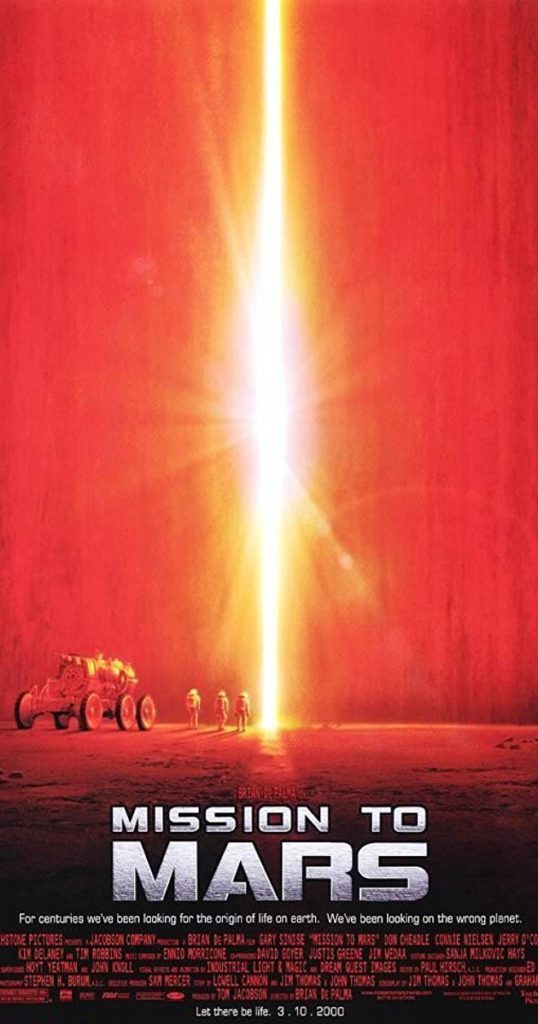
Right now, you’re thinking one of two things: either “Disney had a ride called Mission to Mars?” or “Disney had a movie called Mission to Mars?”
THE RIDE: Disneyland, 1955. Tomorrowland was set in the then-distant year of 1986, when designers imagined that passenger service to the moon would be a simple process. So under the 80-foot beacon of the TWA Moonliner rocket, guests could get a preview of that experience aboard Rocket to the Moon – a “simulator” (minus the motion we associate with them today) in which guests sat in concentric, elevated circles. In the center of the room, circular screens in the floor and ceiling would act as “windows” (paired with additional “windows” around the room’s circumference), giving guests the impression that they were in a capsule launching from Anaheim to encircle the moon.
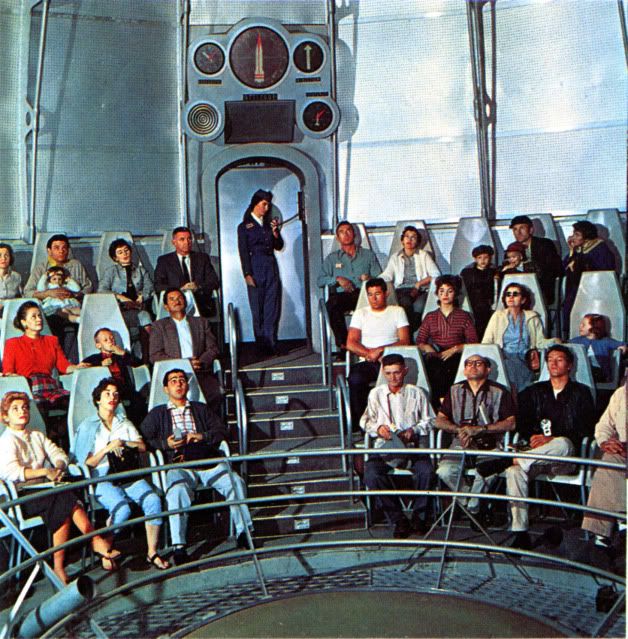
When Walt’s “New Tomorrowland” debuted in 1967, it offered a from-scratch, larger rebuild of the theater housing an updated Flight to the Moon, again with two concentric-circle theaters. Likewise, Magic Kingdom in Florida was constructed with Flight to the Moon in its Tomorrowland, placed in a prominent position along the land’s main entry corridor.
Of course, “tomorrow” always tends to become “today,” and by 1972, NASA’s real-life manned missions to the moon had made Disney’s rides look dated. In an era when Tomorrowland was still dedicated to being scientifically serious, that required a change. Mission to Mars opened in 1975, re-using the same format and adding seat vibration to create a mostly-scientific journey to the “red planet.” (In the ’90s, the attraction’s two-decade-outdated remains would be reclaimed for an attraction you probably have heard of: the Lost Legend: Alien Encounter).
THE MOVIE: Disney’s 2000 film Mission to Mars isn’t exactly an adaptation of the ride (which was only a lightly-plotted, mostly-educational “sight-seeing” trip to the “red planet” before the ship is damaged by volcanic activity and must return home). The film stars Don Cheadle and Gary Sinise as two among a space crew who arrive on Mars to find almost supernatural occurances, like crystalized columns of water burst forth from the surface, and mountains eroded to resemble human faces. It soon descends into a poorly-scripted, clunky exploration into the origin of humanity – a sci-fi film without much heart.
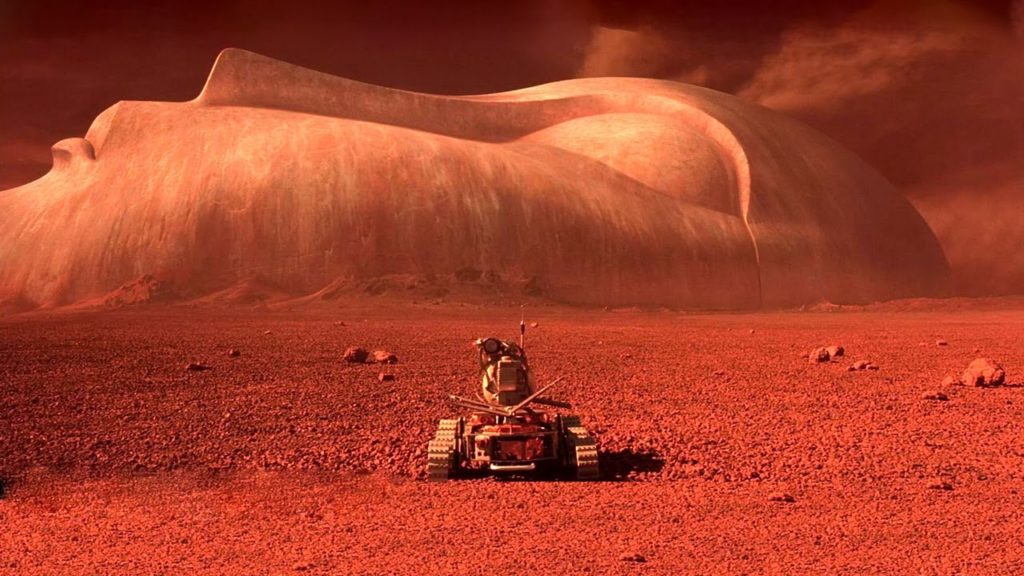
Mission to Mars earned an unimpressive $111 million against its $100 million budget, earning both praise and ridicule for its visuals and story / dialogue respectively. It ranks low on our list, though, not because of what it was, but what it wasn’t. It would be understandable if you didn’t even know that Mission to Mars was a film at all. Despite being a big budget late spring release, Mission to Mars left practically no footprint in pop culture whatsoever…
6. BAD: Haunted Mansion
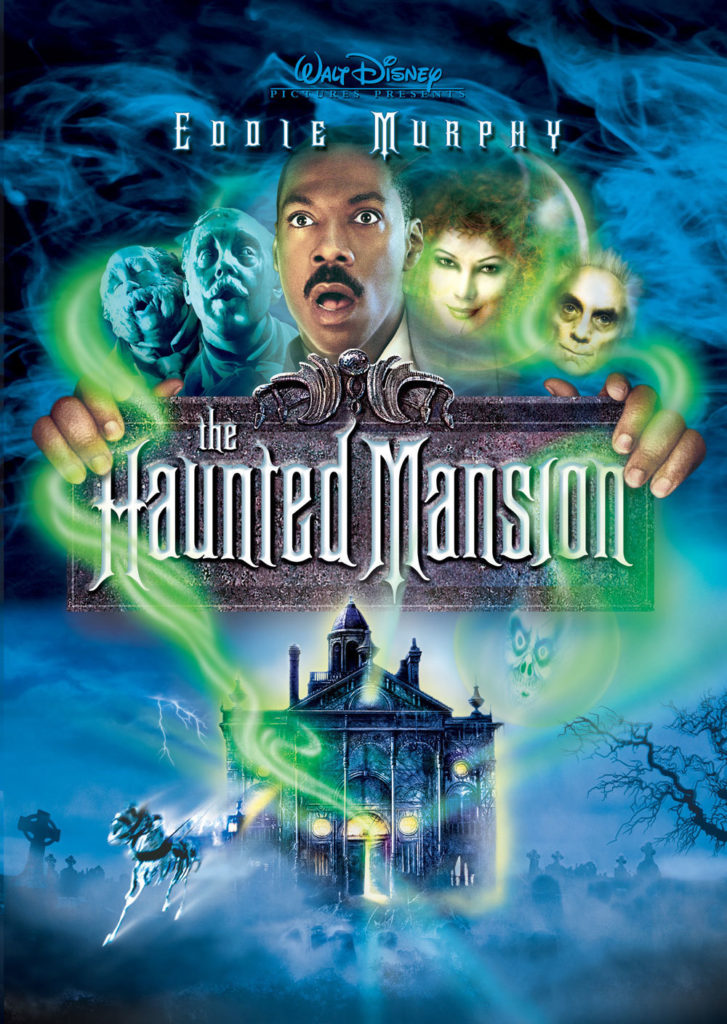
THE RIDE: Opened in 1969, the Haunted Mansion is unique in that it was the first major project undertaken after Walt’s death. And though Walt had overseen the construction of the ride’s pristine plantation house exterior six years earlier, other projects (like the 1964 – 65 New York World’s Fair and 1967’s New Tomorrowland) had stalled the development of what would go inside the ride. So when Walt died in 1966, designers still didn’t know what Walt would’ve wanted. The story of the Haunted Mansion is the story of two Imagineers – Claude Coats and Marc Davis – whose differing styles ended up turning the Haunted Mansion into the hybrid it is today: a moody, atmospheric, eerie, strictly-scenic first half, and a goofy, sing-along, character-filled second half of perfectly-staged vignettes.
Most interestingly, the ride famously lacks a plot, intentionally hinting, but remaining abstract. The Ghost Host; the hanging man; the bride; the hatbox ghost; the hitchhiking ghosts… Imagineers believed that by simply featuring spooky sights and sounds and memorable characters without a definitive plot guests would be able to ride over and over, always discovering something new.
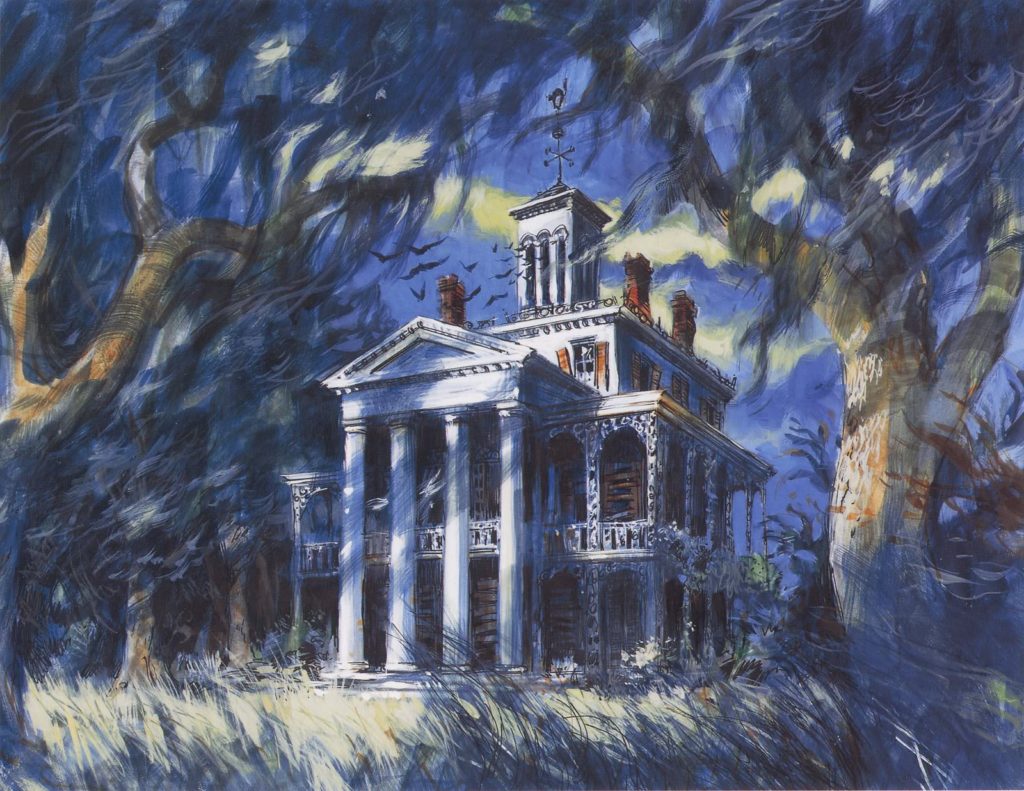
All-in-all, the Haunted Mansion is perhaps the Disney ride stocked with the most memorable scenes. From start-to-finish, guests pass through a haunting “Limbo” boarding area, creaking hallways of ghostly doors, endless corridors, an otherworldly seance conducted by the disembodied Madame Leota, an attic of wedding remains, and a sing-along graveyard full of “grim, grinning ghosts” who’ve come out to socalize. It’s no surprise that the Haunted Mansion stands as a pinnacle of classic dark rides.
THE MOVIE: Just missing a Halloween-season release, November 2003’s The Haunted Mansion signaled an unusual direction for the storied ride. The film (whose mansion has a sort of mutated fusion of California and Florida’s exteriors) indeed features many of the iconic settings and scenes from the ride, but it remixes them as a family comedy starring Eddie Murphy as a realtor who yelps and babbles at each of the home’s supernatural sights, like the iconic Madame Leota (voiced by the vocally-fried Jennifer Tilly for comedic effect) or the always-musical singing busts.

While the Haunted Mansion attraction stands as a perfect union of balance between two Imagineers’ otherwise opposing styles, the film feels pulled in too many directions, none of which coalesce nicely. On one hand, the visuals and practical sets the film employs are stunning; on another, it’s scary, with some legitimately frightening characters and moments; at places, it pays homage to the ride and to fans; but it’s all overlaid with a comedic “family friendly” act that doesn’t quite resonate, and even tarnishes the ride’s signature scenes. The end result is that it’s not quite creepy, and not quite comedic, wrapped up in a story that hints at the purposefully-plotless attraction, but becomes a standard descent into “good vs. evil” with a sappy finale.
The Haunted Mansion did well at the box office despite some pretty scary reviews but – like so many of the films on this list – it was ultimately forgotten by pop culture and left as a remnant of another time. Ultimately, that’s a good thing, as otherwise we might’ve ended up with Audio Animatronic figures of Eddie Murphy in mansions across the globe!
7. THE WORST: The Country Bears
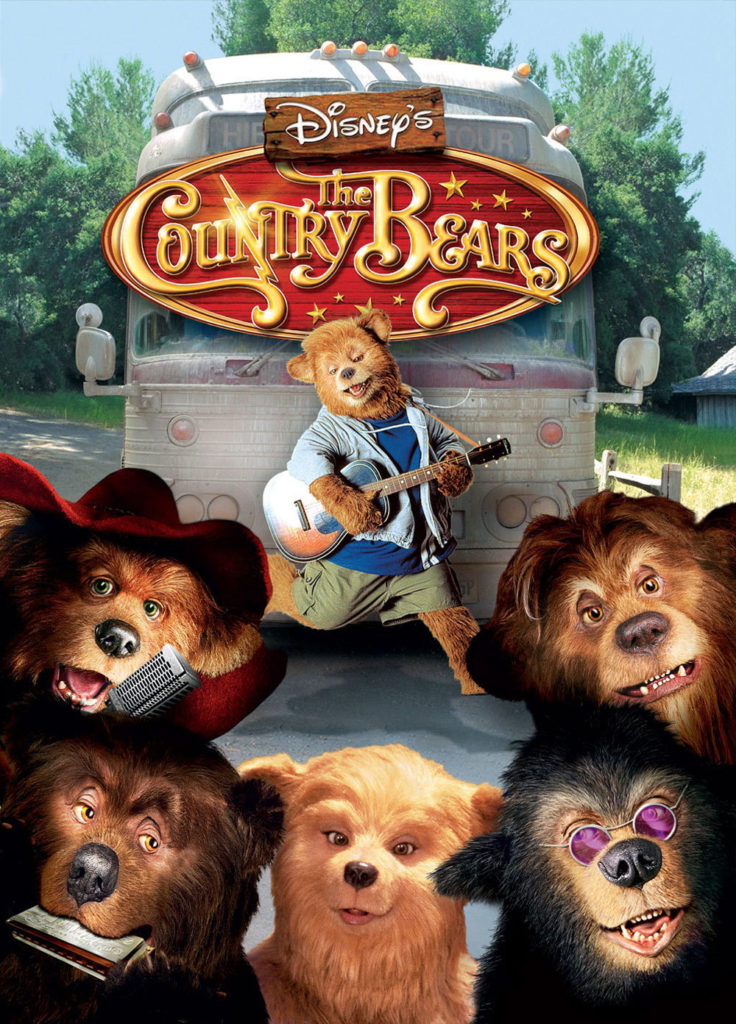
THE ATTRACTION: When Disney’s Imagineers developed the Country Bear Jamboree, it wasn’t intended to play at Disney Parks at all. In fact, the Audio Animtronic production was originally earmarked for a very new kind of entertainment enterprise Walt envisioned for a remote stretch of the Sierra Nevada Mountains hours from Disneyland. There, he planned to build the Mineral King Ski Resort, the world’s leading winter sports family destination. Unfortunately, hurdle after hurdle sidelined the project, and Walt’s death seemed to signal the end of Mineral King and its animatronic bear band.
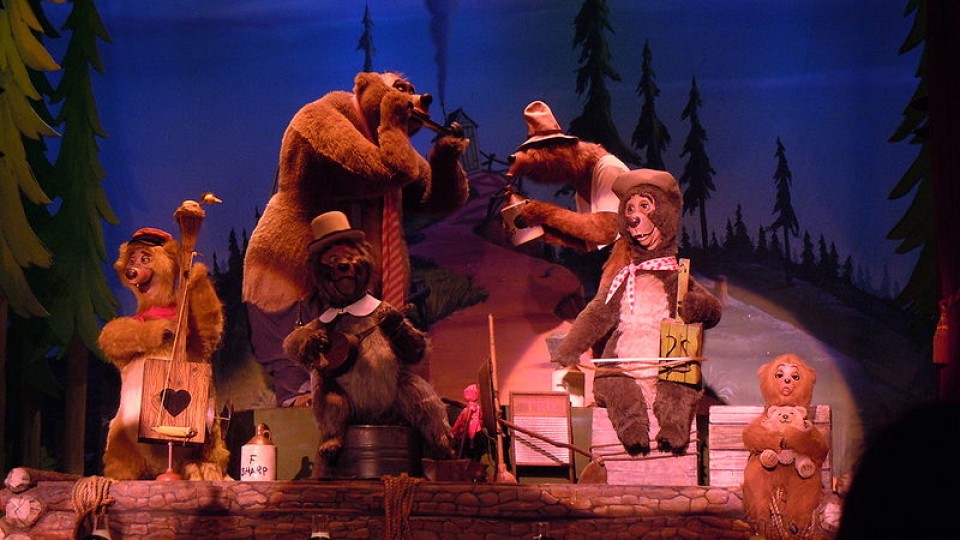
Ultimately, the Country Bear Jamboree did open alongside Magic Kingdom in 1971, and its immense popularity led to it being the first Walt Disney World attraction to be cloned back to Disneyland! We traced the development of the attraction and its leading Imagineer in its own in-depth feature, Modern Marvels: The Country Bear Jamboree. Ultimately, the attraction remains a Magic Kingdom classic to this day – a rootin’ tootin’ country revue that harkens back to a simpler time at Imagineering.
THE MOVIE: The Country Bears was released in 2002. The film re-uses the tried-and-true storyline (used several times by The Muppets alone) of an innocent-hearted young fan (in this case, “Beary Barrington” – a bear raised by a human family, voiced by a young Haley Joel Osment) earnestly trying to convince his favorite band – The Country Bears – to reunite and save their condemned theater from the wrecking ball. As always, the film then follows Beary as he wins over the band’s members one-by-one on a roadtrip style recruitment adventure, leading to the re-opening of Country Bear Hall.
Despite a relatively well-known cast, audiences simply didn’t connect with The Country Bears. Maybe it was the fact that Disney Parks fans didn’t get behind the film since it didn’t use any of the characters or songs from the attraction; maybe it was the story that felt like a retread of so many films before…
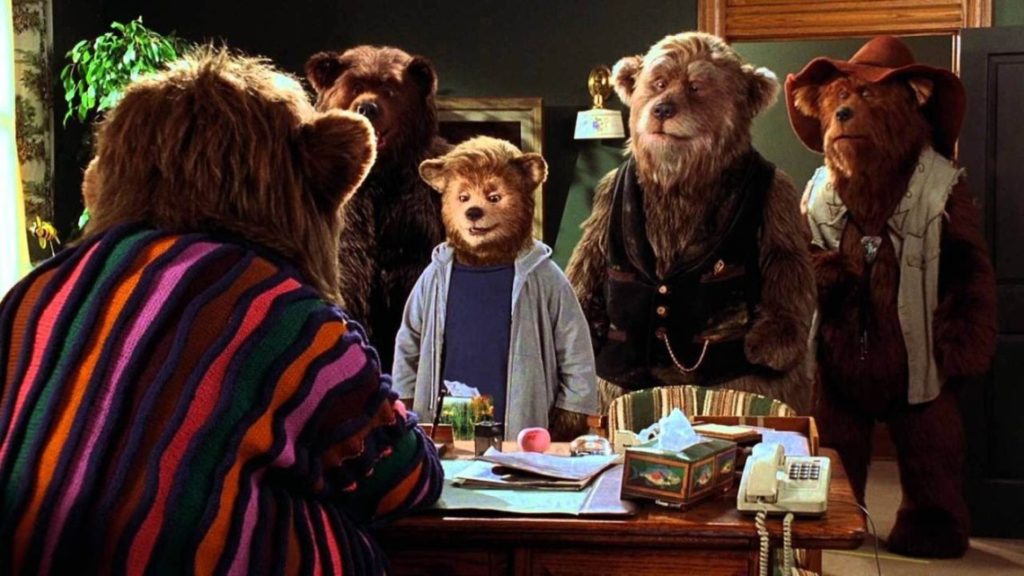
…maybe it was uncomfortable and awkward Audio Animatronic bear suits created by Jim Henson’s Creature Shop that somehow missed all the whimsy that made Marc Davis’ original figures so friendly and fun in favor of looking like uncanny-valley-style “real” bears wearing clothes.
The film made only $18 million against its $35 million budget, becoming a financial disaster. Meanwhile, film critic Sean O’Connell probably put it best when he said “”Bears is bad. Not ‘terrible filmmaking’ bad, but more like, ‘I once had a nightmare like this, and it’s now coming true’ bad.”
In production?
From best to worst, it may seem that most of Disney’s attempts to translate their films to the screen have gone belly up. Most film fans and Disney Parks afficianados will agree that Pirates of the Caribbean is, by far, Disney’s most successful attempt to reverse engineer a film yet. But yet is the key word… On the last page, we’ll explore three projects at various stages of Disney development to see if they might one day top this list themselves…


